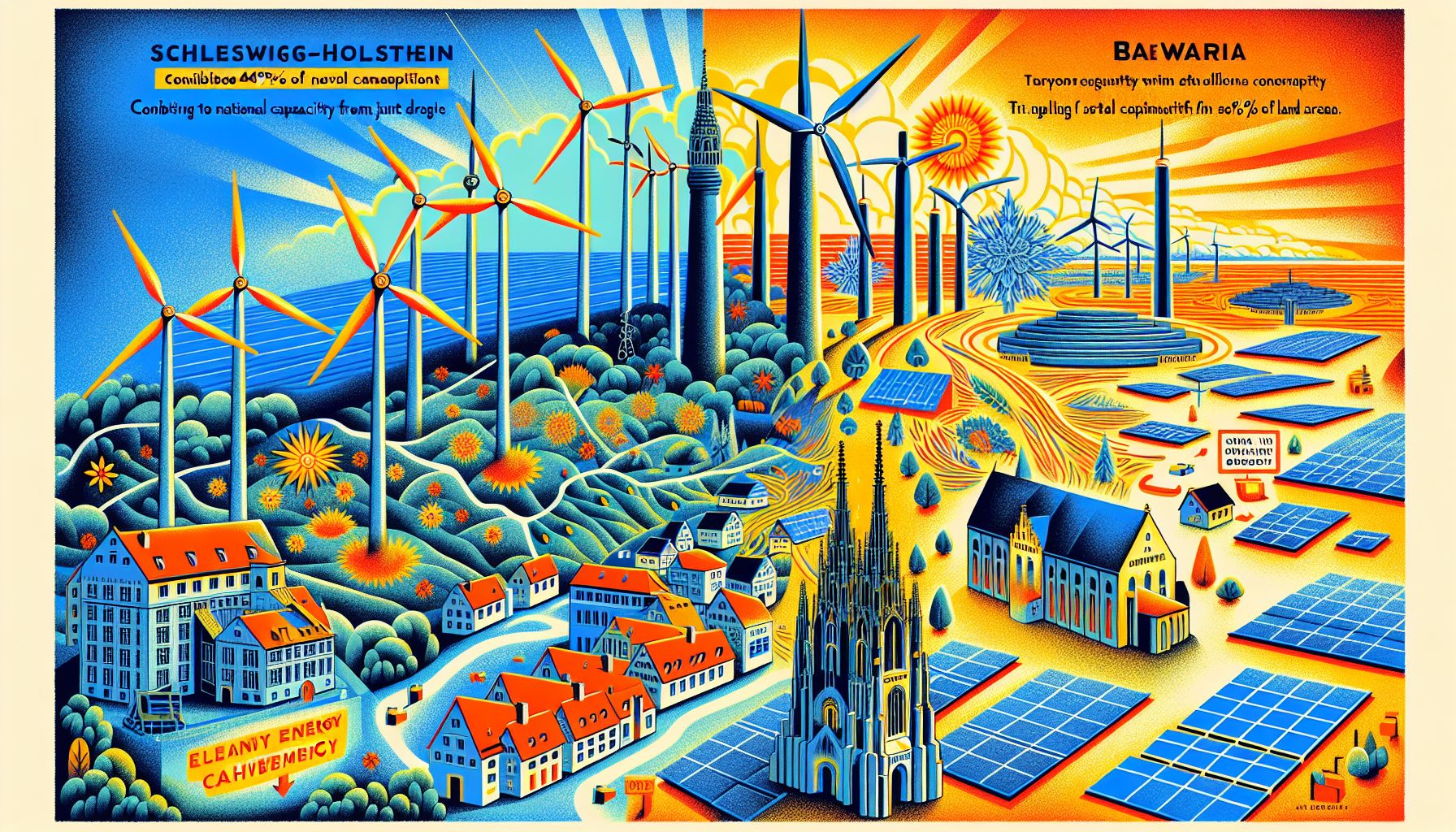Germany's Race Against Time: Northern Wind Power Leads While South Lags Behind

Berlin, Wednesday, 20 November 2024.
Despite northern states like Schleswig-Holstein powering ahead with wind energy, contributing 40% of national capacity from just 20% of land area, Germany faces significant challenges in meeting its 2030 renewable targets. The stark regional divide, with Bavaria’s strict regulations hampering wind development while excelling in solar, highlights the complex path to achieving 80% renewable electricity by 2030. Most remarkable is Emden’s achievement, producing ten times the wind power output per square meter compared to the national average.
The Regional Divide in Renewable Energy
In Germany, the disparity in renewable energy development between the northern and southern regions is striking. While northern states like Schleswig-Holstein and Niedersachsen are harnessing the power of the wind with impressive efficiency, regions such as Bavaria remain focused on solar energy. This division is largely due to the geographical advantages and regulatory environments that favor different types of renewable energy. Bavaria’s stringent regulations on wind turbine placements near settlements have significantly limited the expansion of wind energy in the south, despite the region’s potential for solar power due to its sunnier climate[1].
Wind Energy: Northern Germany’s Strength
Northern Germany, particularly the districts of Emden and Nordfriesland, exemplifies successful wind energy implementation. Emden, known for its remarkable wind power output per square meter, and Nordfriesland, the district with the highest megawatts of wind power capacity, are pivotal in driving the country’s wind energy ambitions. However, the national goal for 2024 set at 6.9 gigawatts has seen only 2.5 gigawatts achieved, underscoring the need for more robust policy support and streamlined approval processes to accelerate wind energy projects[1].
Solar Energy: A Southern Priority
In contrast, Southern Germany has become a leader in solar energy production, thanks to its more favorable climate. Despite Bavaria’s restrictive wind policies, the state, along with Baden-Württemberg, capitalizes on its abundant sunshine to contribute significantly to the nation’s solar energy targets. By 2023, Germany’s solar energy capacity target of 13 gigawatts was exceeded slightly, reaching 13.6 gigawatts, demonstrating the region’s capability to meet and surpass national goals when conditions are right[1].
Challenges in Energy Transition
The path to achieving 80% renewable electricity by 2030 is not without hurdles. The phenomenon of ‘Dunkelflaute’, periods of low wind and sunlight, has highlighted the vulnerability of renewable energy sources. In early November 2024, such conditions led to a significant reliance on fossil fuels, which accounted for 70% of electricity generation during that period[2]. This underscores the importance of enhancing storage capacities and diversifying energy sources to maintain stability in the power grid[2].
Strategic Innovations and Future Prospects
To address these challenges, Germany is investing in large-scale battery storage facilities, such as the 239 megawatt-hour project in Bollingstedt, Schleswig-Holstein. This facility is expected to play a crucial role in stabilizing the grid during periods of low renewable output[1]. Moreover, the German government is preparing legislative measures to support the transition to green hydrogen, aiming to reduce dependency on fossil fuels and ensure sustainable energy generation during ‘Dunkelflaute’ periods[2]. As Germany continues to navigate the complexities of its energy transition, these innovations and strategic shifts are vital for meeting future renewable targets and achieving climate neutrality by 2045[3].

